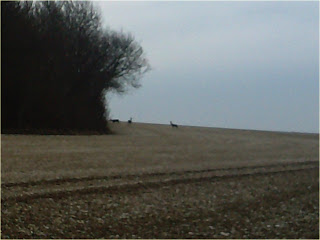It is known as one of The Eastern Clumps.
It is between Maresfield and Hartfield on the B2188 by the
junction of the B2026.
Evidence of humans using this land dates back over 2000 years.
It was used by Henry VIII to hunt Deer.


31.05.2011
09.05.2011


Green Tiger Beetle
Cicindela campestris
Family - Carabidae
Order - Coleoptera
Very fast Beetle that chases down Spiders and Ants.
They are all over the sandy paths.
They take to the air to get out of your way.
There are five species of Tiger Beetle in the UK.
Cardinal Beetle
Centipede
09.05.2011
31.05.2011
You only see them when they move!
Common Lizard
Lacerta vivipara
Also known as the Viviparous Lizard. The Female keeps fertilised eggs inside
her body until they are ready to hatch. When the time is right she lays the eggs
and immediately the young lizards hatch out.
The smooth snake, the adder and the slow worm are also viviparous.
Common Newt ?


Labyrinth Spider
Agelena labyrinthica
Family - Agelenidae
Genus - Agelena
As the name suggests, these Spiders construct a network of
tunnels with a tubular retreat main entrance which they sit in
wait for prey to land on the extending sheet of web. They are
found at groundlevel and higher up on gorse. The females construct
a complex egg sac for their young at the centre of the labyrinth.
Photo of egg sac by Gary Bradley of UKSafari.com : HERE
They are often found sharing their webs with others of their kind.
There is only one UK species.
21.05.2011
A Female Hunting Spider - Lycosid, carrying Egg Sac.
Harvestman

Agalenatea reddi
Family - Araneidae
Genus - Agalenatea
Same family as the Common Garden Spider Araneus diadematus.
Single European Species. These Spiders spin an Orb Web with a
dense lattice of silk at the centre. They sit on a silken platform
at the edge of the web where they wait for prey.
I found this one (above) living over a sandy gully.

Agalenatea reddi
This one was living on rushes in a field on the edge
of the Heath, behind a copse of trees. I could hear the
loud buzzing of many bees whilst trying to focus on this
Spider, which was swaying in the breeze. I was determind
to get the shot so I ignored the buzzing. I got the shot
eventually then turned around to see an ascending cloud
of bees so I moved away slowly but surely.
09.05.2011
Lycosid
09.05.2011
Female Stone Spider
Family - Gnaphosidae
Genus - Drassodes
In her silken cell under a loan, small rock in the middle
of the path. She looks pregnant.
Mangora acalypha
Family - Araneidae
Genus - Mangora
Single species in the UK. Spins an Orb Web.
Nice and easy to identify by it's distinctive markings.
Harvestman
21.05.2011
Raft / Fishing Spider
Dolomedes fimbriatus
Family - Pisauridae
Genus - Dolomedes
I've been visiting a small bog / marsh at King's Standing for a
few weeks now, I had a feeling tthat Raft Spiders were there as it
is the perfect habitat for them. On my third visit I found this.
I figured it was a Fishing Spider shedding so I looked some more.
First sighting - took my breath away!
These Spiders can catch tadpoles and small fish.
They can run across water to catch prey and can even remain
submerged, if threatened, for almost an hour.
These Spiders fish for a living but when they move across
water they look like a raft with paddles.
Photo by C. Houghton
Said to be the UK's biggest and most venomous Spider.
An impressive creature.
Said to be the largest and most venomous Spider in the UK. Definately my most exciting find to date. I coudn't stop
shaking with adrenalin. Even felt a bit sick with excitement.
There was two of them. One carrying an Egg Sac.
They're recorded as being 22mm in length but I'd say this one
was 30mm in length, if not more!
They are from the same family as the Nursery Web Spider -
Pisaura mirabilis
Mothercare Spider
Family - Theridiidae
Genus - Theridion
Living on Gorse. She was guarding a bluish Egg Sac and
had a healthy appetite judging by the remains in her Web
Mangora acalypha
Family - Araneidae
Genus - Mangora
This Spider was living just inside a huge web that
covered a whole gorse bush. I thought it must be
caterpllars but it was covered in thousands of tiny
red spider mites - see next two photo's.
This bursting bubble of Spiderlings was on the edge of
a Labyrinth Spiders' Web.
I found this Spider living in a long tube-like sac,
under a clump of fallen moss, in the shadow of the
roots of an upturned tree in the copse along the edge
of the Heath. I don't know which species it is.
31.05.2011
























































































































































































































